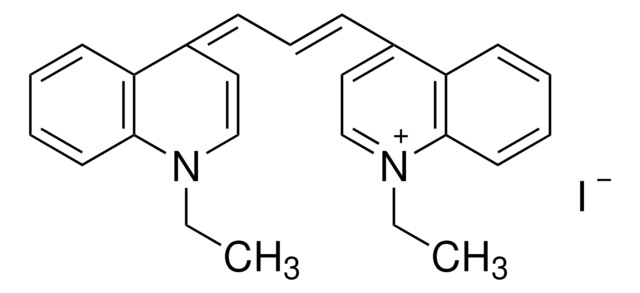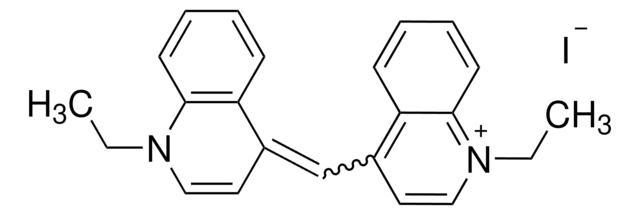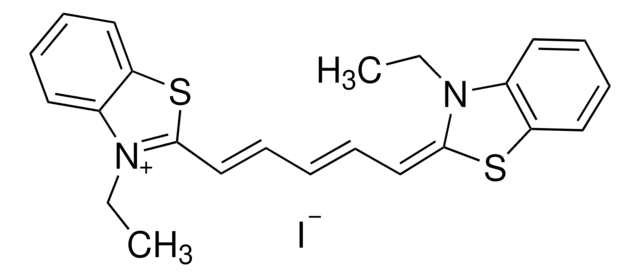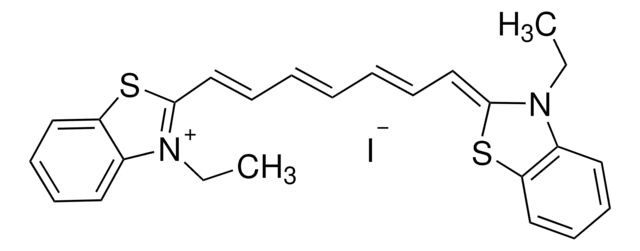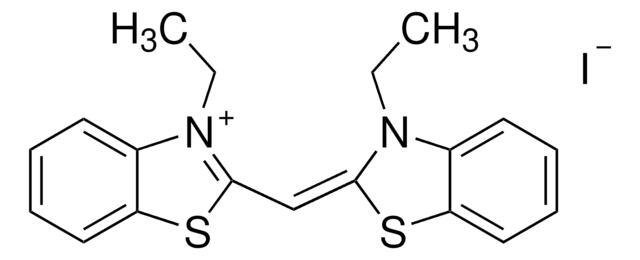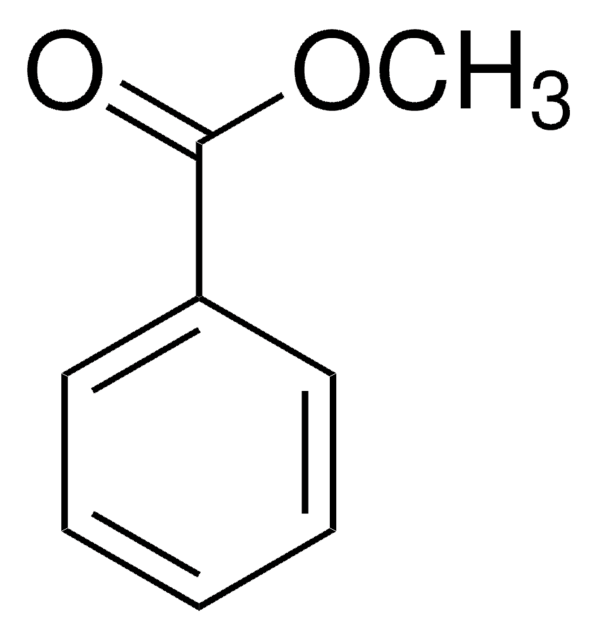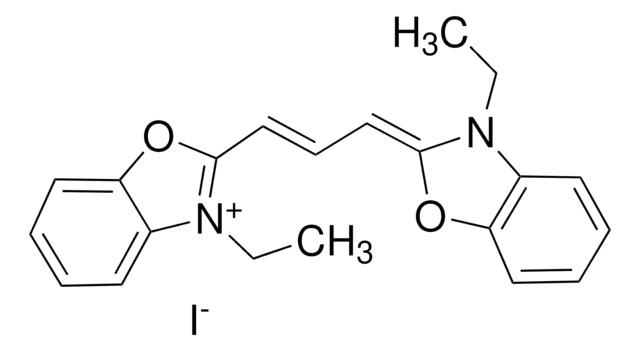Kluczowe dokumenty
323764
1,1′-Diethyl-2,2′-cyanine iodide
97%
Synonim(y):
1-Ethyl-2-[(1-ethyl-2(1H)-quinolinylidene)methyl]quinolinium iodide, Decynium 22, Pseudocyanine iodide, Pseudoisocyanine iodide
About This Item
Polecane produkty
Poziom jakości
Próba
97%
Formularz
powder or crystals
mp
273 °C (dec.) (lit.)
λmaks.
524 nm
ε (współczynnik ekstynkcji)
≥25000 at 487-495 nm in ethanol
Zastosowanie
diagnostic assay manufacturing
hematology
histology
temp. przechowywania
room temp
ciąg SMILES
[I-].CCN1\C(C=Cc2ccccc12)=C\c3ccc4ccccc4[n+]3CC
InChI
1S/C23H23N2.HI/c1-3-24-20(15-13-18-9-5-7-11-22(18)24)17-21-16-14-19-10-6-8-12-23(19)25(21)4-2;/h5-17H,3-4H2,1-2H3;1H/q+1;/p-1
Klucz InChI
GMYRVMSXMHEDTL-UHFFFAOYSA-M
Powiązane kategorie
Opis ogólny
Zastosowanie
Hasło ostrzegawcze
Danger
Zwroty wskazujące rodzaj zagrożenia
Zwroty wskazujące środki ostrożności
Klasyfikacja zagrożeń
Acute Tox. 2 Inhalation - Acute Tox. 2 Oral - Acute Tox. 4 Dermal - Eye Irrit. 2 - Skin Irrit. 2 - STOT SE 3
Organy docelowe
Respiratory system
Kod klasy składowania
6.1A - Combustible acute toxic Cat. 1 and 2 / very toxic hazardous materials
Klasa zagrożenia wodnego (WGK)
WGK 3
Temperatura zapłonu (°F)
Not applicable
Temperatura zapłonu (°C)
Not applicable
Środki ochrony indywidualnej
Eyeshields, Faceshields, Gloves, type P3 (EN 143) respirator cartridges
Wybierz jedną z najnowszych wersji:
Masz już ten produkt?
Dokumenty związane z niedawno zakupionymi produktami zostały zamieszczone w Bibliotece dokumentów.
Klienci oglądali również te produkty
Nasz zespół naukowców ma doświadczenie we wszystkich obszarach badań, w tym w naukach przyrodniczych, materiałoznawstwie, syntezie chemicznej, chromatografii, analityce i wielu innych dziedzinach.
Skontaktuj się z zespołem ds. pomocy technicznej

